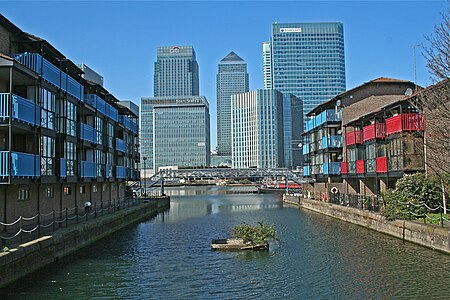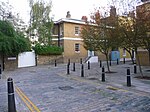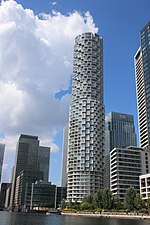Jamestown Harbour
Buildings and structures in the London Borough of Tower HamletsCanary Wharf buildingsRedevelopment projects in London

Jamestown Harbour is a low-density luxury housing development of 73 homes in Poplar in East London, situated between Poplar Dock and Blackwall Marina, and to the north of Wood Wharf. It is spread across three cul-de-sacs: Landons Close, Bridge House Quay, and Lancaster Drive.
Excerpt from the Wikipedia article Jamestown Harbour (License: CC BY-SA 3.0, Authors, Images).Jamestown Harbour
Trafalgar Way, London Blackwall
Geographical coordinates (GPS) Address Nearby Places Show on map
Geographical coordinates (GPS)
| Latitude | Longitude |
|---|---|
| N 51.503888888889 ° | E -0.0088888888888889 ° |
Address
Blackwall Basin
Trafalgar Way
E14 5SE London, Blackwall
England, United Kingdom
Open on Google Maps










